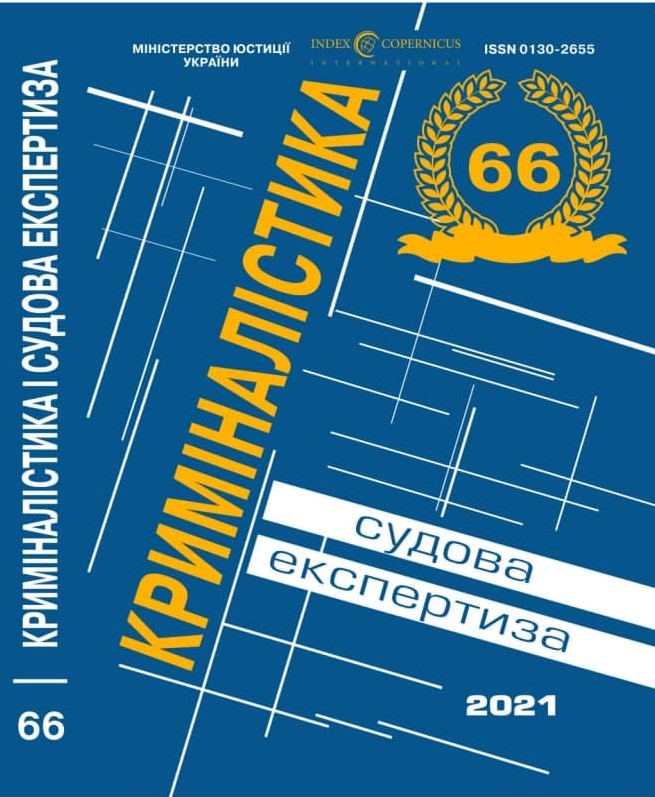
| https://doi.org/10.33994/kndise.2021.66.22 |
V. Korzh
The article deals with the current trends in the development of the forensic doctrine of the forensic characteristics of crimes, analyzes the controversial issues of its structural elements. The concept of the forensic characteristics of crimes as an information database on forensic significant signs of a crime, obtained as a result of generalization of investigative and judicial practice. Its main elements are investigated: 1) the subject of criminal encroachment; 2) information about the identity of the offender; 3) characteristics of typical methods of crime; 4) information about the situation in which the crime was committed; 5) typical traces of a crime; 6) information about the identity of the complainant (victim).
The problem of development of the forensic characteristics of corruption crimes is investigated, discussion questions about the concept and the main structural elements are analyzed. It is summarized that the forensic characteristics of corruption crimes is an information database obtained as a result of generalization of the investigative and judicial practice on forensic significant signs of corruption crimes, a special subject of criminal encroachment, specific ways of providing corruption services, a specific environment, typical traces, corruption ties, knowledge of which contribute to the construction and verification of versions, determination of the direction of the investigation.
In practical terms, the forensic characteristic of corruption crimes is a kind of information model, a set of information about the specified type of crime, the use of which in a specific situation will help the investigator to quickly and promptly make the correct tactical decision on the methods of investigation, the use of tactics and technical means when planning investigative and search actions. forensic operations.
The main structural elements of the forensic characteristics of corruption crimes have been determined. These are: 1) the specific area of the criminal offense; 2) a special subject of a corrupt act; 3) specific ways of providing corruption services; 4) the specific situation in which the act of corruption is committed; 5) specific traces of corruption crimes; 6) corrupt ties with the organizers of the shadow and criminal business.
It was stated that the organizers of the shadow and criminal business strive to have “their own” people, both in the bodies of state power, administration, and a cover (“roof”) in law enforcement bodies. Corrupt officials receive corruption rewards (“kickbacks”) for providing corrupt services. They, using their power, official powers, perform certain actions (or fail to act) in the interests of the shadow and criminal business in order to ensure corruption assistance, corruption patronage, corrupt security, corruption protectionism, corruption intervention, corruption lobbying, corruption counteraction.
It is summarized that the stated theoretical provisions of the forensic characteristics of corruption crimes, its main structural elements have a certain scientific and practical significance.
Key words: forensic characteristics, corruption crimes, structural elements, corruption services, investigation.










